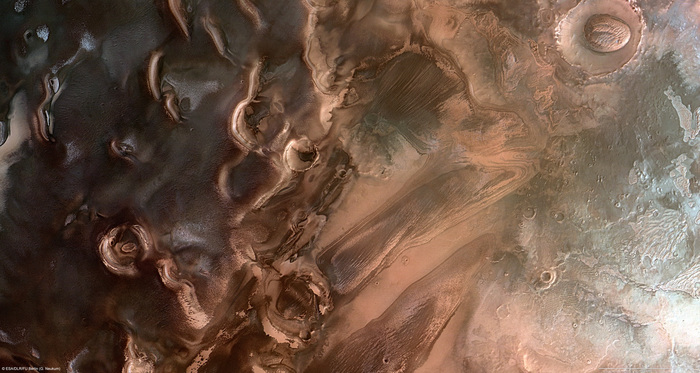Icon: enlarge
Mars in a picture of the "Hubble" space telescope
Photo: NASA / AP
Scientists working with astrophysicist Elena Pettinelli from the University of Roma Tre report in a new study of a network of subglacial salt lakes at the south pole of Mars.
With the study, which was published in the journal "Nature Astronomy", they confirm findings about water on Mars from 2018.
For their investigations, the team used data from the radar device on the "Mars Express" orbiter of the European Space Agency ESA.
They based their findings on more than 100 radar observations from 2010 to 2019. The scientists' method works in much the same way as it does on Earth.
For example, geoscientists used satellite data to track down underground lakes in the Antarctic and the Canadian Arctic.
There are probably three smaller bodies of water around a large lake under the Mars ice.
These ponds are separated from the main lake.
The scientists suspect that high salt concentrations should prevent the water in this cold place from freezing.
The salt lowers the freezing point significantly.
The surface temperature at the South Pole is estimated to be minus 113 degrees Celsius.
But the data shows that it gets warmer at depth.
Water on Mars - that naturally raises the question of possible life.
The researchers do not rule out that even in the salty water microbial life forms that have adapted to low-oxygen environments could survive.
Such microorganisms are at least known on earth.
The scientists write that future missions to Mars should examine the region at the South Pole more closely.
For years, experts have been discussing whether there is liquid water on Mars.
It is certain that there must have been water billions of years ago.
This is shown by dried out rivers and sediments.
Even an ocean could once have covered large parts of young Mars.
About four billion years ago Mars was warm and humid, like the earth.
But the red planet eventually turned into the barren, arid world it is today.
Icon: The mirror
joe




